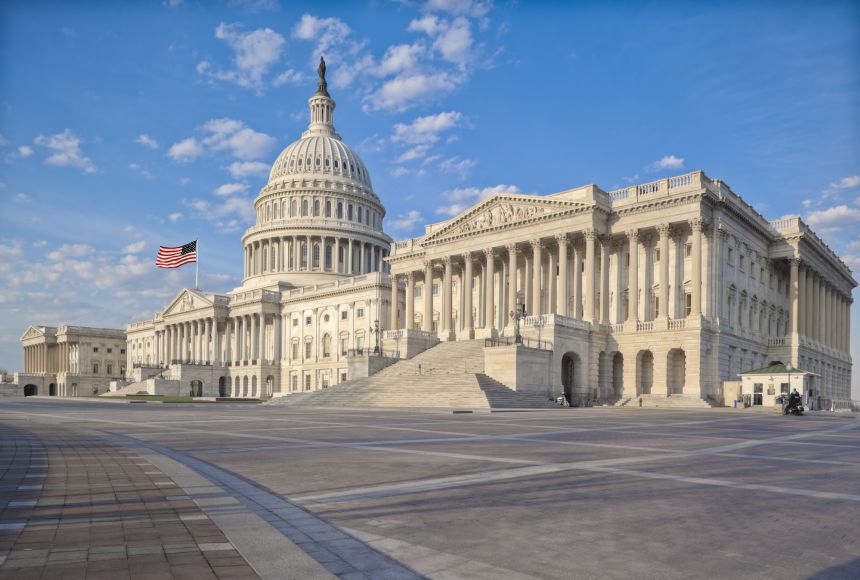Congress serves as the legislative branch of the United States government and is responsible for making the laws of the country. It comprises two chambers, or parts: the Senate and the House of Representatives. Members of Congress are elected by a direct vote of the people from each state. However, the District of Columbia, Puerto Rico, and other U.S. territories each elect a nonvoting member of Congress.
The Senate
Each state is represented by two senators, and there are 100 senators in total. Because each state shares the same number of senators, regardless of the differing populations of the states, all are represented equally. Senators hold office for six year terms. Every two years, about a third of the Senate is up for reelection. In order to become a senator, candidates must be at least 30 years old, have been a U.S. citizen for at least nine years, and be a resident of the state they represent.
The House of Representatives
There are 435 voting members in the House of Representatives. Every state has at least one representative in the House. A state’s population determines how many representatives each state is given, so states with more residents have more representatives. Voting members of the House of Representatives serve a two-year term. In order to run for a seat in the House, candidates must be at least 25 years old, have been a U.S. citizen for at least seven years, and live in the state they seek to represent.
Because the number of representatives for each state is based on population, the distribution of House seats is reapportioned, or redistributed, every 10 years based on the U.S. Census. The total number of voting members is fixed at 435. Therefore, during reapportionment, some states may lose seats while others gain them.
There are also nonvoting delegates who serve in the House from American Samoa, Guam, the U.S. Virgin Islands, the Northern Mariana Islands, and the nation's capital, the District of Columbia. Additionally, there is a resident commissioner from Puerto Rico.
Powers of Congress
The U.S. Constitution defines the powers specifically given to Congress. These include making laws, declaring war, levying taxes, borrowing money, and impeaching and convicting the president.
In order for a bill to become law, it must pass both chambers by a majority vote. It is then sent to the president, who can either sign it into law or veto the bill to stop it from becoming law. However, the bill can still become law by an override, if it is approved by a two-thirds vote of both chambers.
Each legislative chamber has the power to introduce legislation, but some powers are specifically designated for one chamber or the other. Revenue and spending bills must originate in the House. Only the House can impeach federal officials, a legal proceeding in which an official is accused of misconduct that can result in their removal from office. The House is also responsible for deciding who will become president in cases where no candidate receives a majority of electoral votes.
The Senate has sole responsibility for ratifying treaties and approving the appointment of nominees by the president for certain government positions, such as Supreme Court justices, cabinet members, and U.S. ambassadors. Impeachment trials are conducted in the Senate after referral by the House.
